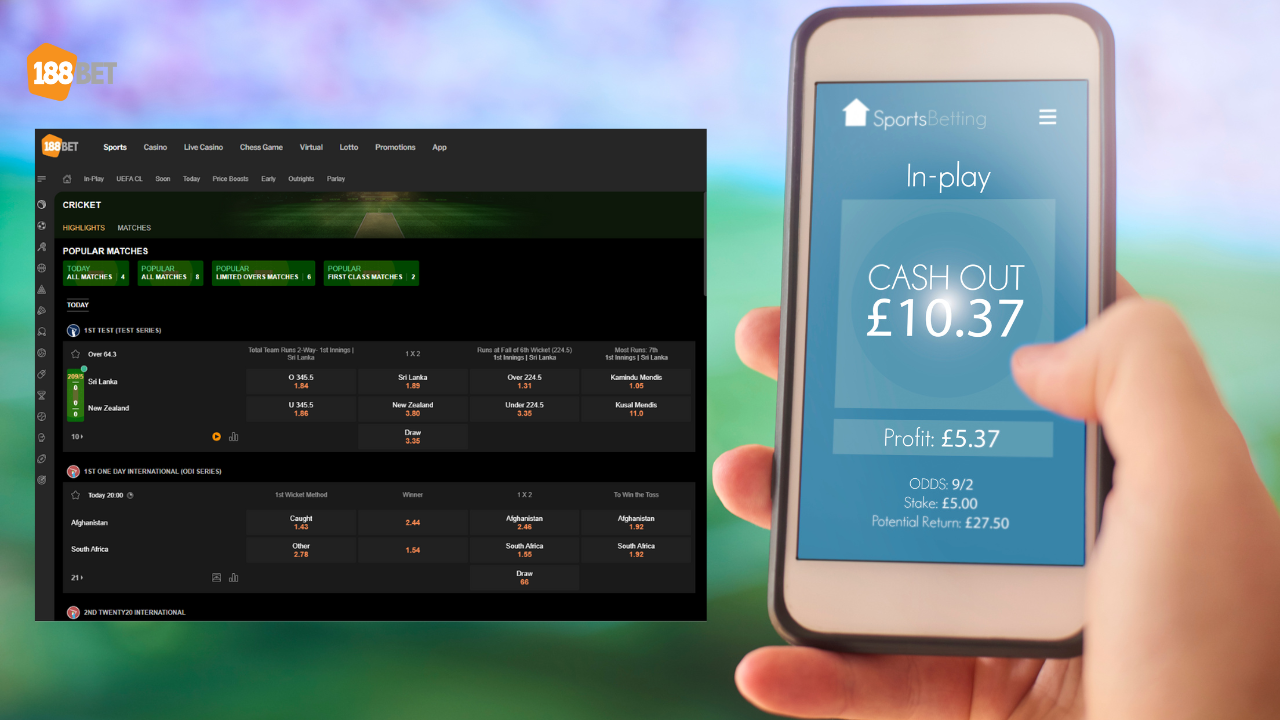Moneyline Betting: Guide to Odds & Strategies

If you’re new to sports betting and find it confusing, you might appreciate moneyline betting, one of the simplest and most straightforward forms of betting. However, moneyline bets aren’t just for beginners—they are equally popular among seasoned professional bettors.
In moneyline betting, you are simply wagering on which team or individual (in sports like tennis or boxing) will win a specific game or event. There are no concerns about the point spread or other factors. All that matters is which team or player wins. To sum it up, in moneyline betting, you follow the famous words of former Raiders owner Al Davis: “Just win, baby.”
Moneyline Betting Explained
In most sports, moneyline betting involves choosing between a “favorite” (the team expected to win) and an “underdog” (the team expected to lose). Since favorites are more likely to win, betting on them offers lower payouts. On the other hand, betting on the underdog can bring higher rewards due to the increased risk.
How much you stand to win in moneyline betting depends on the odds set by the sportsbook. The larger the upset, the bigger the payout for betting on the underdog. Betting on favorites provides more security but smaller returns, while underdogs present the potential for higher profits with a greater risk.
Three-Way Moneylines & Draws
In sports like soccer, where ties are common, moneyline betting offers a third option: the draw. This type of bet is called a three-way moneyline, as bettors can wager on either team to win or on the game ending in a draw. These bets are more risky since a draw introduces another possible outcome. However, the potential payout is usually higher compared to a traditional two-way moneyline.
Example: 3-Way Moneyline (Soccer in INR)
- Charlotte FC: +100 (₹100 wins ₹100)
- Draw: +245 (₹100 wins ₹245)
- DC United: +240 (₹100 wins ₹240)
For bettors who want to avoid the risk of a draw, sportsbooks often offer a “draw no bet” option, which refunds the wager if the game ends in a tie.
How to Read Moneyline Odds
Moneyline odds are represented by a number, which can be either positive or negative. A negative number (e.g., -120) indicates a favorite, while a positive number (e.g., +140) represents an underdog.
Example: Standard 2-Way Moneyline (NBA in INR)
- Dallas Mavericks: +205 (₹100 wins ₹205)
- Boston Celtics: -250 (Risk ₹250 to win ₹100)
In moneyline betting, positive odds tell you how much profit you will make from a ₹100 bet. For instance, a +200 moneyline means a ₹100 bet will return ₹200 in profit. Conversely, negative odds indicate how much you need to risk in order to win ₹100. A -120 moneyline means risking ₹120 to earn ₹100. When odds are even, the sportsbook may list “EVEN” instead of +100, meaning a ₹100 bet wins ₹100.
Moneyline vs. Point Spread Betting
It’s essential to understand the difference between moneyline betting and point spread betting. For instance, if you bet on the Dallas Cowboys ML -120, you only need the Cowboys to win the game outright. However, if a friend bets on the Cowboys with a point spread of -1.5, and Dallas wins by just 1 point, your moneyline bet would win, but your friend’s point spread bet would lose. The point spread bet offers better odds, but also carries more risk since the team must win by a specific margin.
Popular Betting Types: Moneyline, Point Spread, and Over/Under
The three most common forms of betting include moneyline betting, point spread betting, and over/under betting. Unlike point spreads, which balance the playing field, moneyline betting allows for potentially large payouts on underdogs or safer bets on favorites. Keep in mind, however, that betting on large favorites won’t pay out as much, while betting on underdogs may offer higher returns but are less likely to win.
How Are Moneylines Made?
Moneyline odds are determined by sportsbooks after analyzing multiple factors, including team history, recent performance, injuries, and even public sentiment. Odds can fluctuate frequently, so bettors are encouraged to shop around at different sportsbooks to find the best price.
Example: Different Moneyline Prices (in INR)
- Sportsbook A: +115 (₹100 wins ₹115)
- Sportsbook B: +125 (₹100 wins ₹125)
Even a small difference in odds can significantly affect your long-term betting strategy. If you consistently choose better odds, it can make a substantial difference in your overall profits.
Moneyline Betting Strategy
There is no one-size-fits-all strategy for moneyline betting. Some bettors rely on pick service providers, while others do extensive research. A solid approach might involve considering multiple factors such as matchup style, injuries, momentum, and analytics. For example, in NFL betting, you might look at DVOA statistics, or in college basketball, check Bart Torvik ratings.
Some key factors to consider in moneyline betting include:
- Matchup Styles: How do the teams compare?
- Injuries/Rest Days: Is a star player sitting out?
- Momentum: Are you betting against a team on a losing streak?
- Rest Advantage: Is one team more rested than the other?
Betting on underdogs can be more lucrative in the long run if you find value in the odds. For example, if a sportsbook offers a moneyline of +130 for a 50-50 event, such as a coin toss, there’s value in that bet because over time, it can yield profits.



